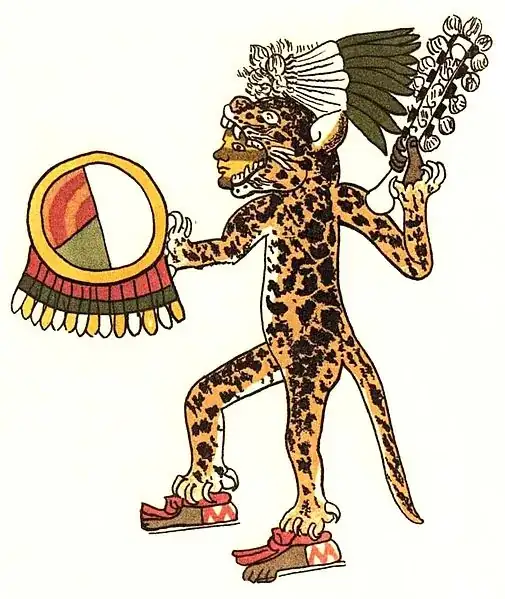<1 out of 3 feasible
Looking at the three concerns specifically mentioned in reverse order:
- Usable in a tropical climate - simply no. It suits a jaguar because, as per the link:
The jaguar uses a stalk-and-ambush strategy when hunting, rather than
chasing prey. The cat will walk slowly down forest paths, listening
for and stalking prey before rushing or ambushing. The jaguar attacks
from cover and usually from a target's blind spot with a quick pounce
The jaguar is also primarily "active" during the night (or daytime in heavily shaded forests) and, like most big cats, pants or goes swimming to cool off.
None of this applies to humans. Humans warriors in primitive societies are primarily active during the day, tend to engage in prolonged medium-to-high intensity activity during hottest periods (rather than a slow wander followed by a brief pounce) and rely on perspiration for cooling rather than panting. Thin cotton leg and arm coverings are porous enough to allow effective cooling and even quilted cotton torso protection can be made breathable, but tight fur is not an option. Speaking from experience - in a tropical environment wearing a helmet, body armour, loose-fitting long-sleeve cotton shirt and cotton trousers is bearable but unpleasant. Heat exhaustion will nail you if wearing anything less breathable while exercising for any extended period.
- The suit should last - no, not while being worn regularly in a tropical climate. The link you provided on fur coats has another Q&A a little further down asking "how do I protect my furs in the off season", to which the answer is:
The best way to ensure that your fur will last for many years is to
have it professionally cleaned and stored through the off-season by
your local retail furrier in a temperature- and humidity-controlled
storage vault.
Another site provides this advice:
FUR HATES THE HEAT BUT LOVES THE COLD
Nothing shortens the life of your fur like keeping it in your closet
during a long, hot summer. If at all possible, we suggest you store
your fur garments in cold storage when you have finished wearing it
for the season, this is one of the most important steps you can take
in preserving your furs.
In short, fur garments can last a long time if kept carefully in the right environment. The Aztecs are not in the right environment.
- The suit should hold up against the weapons of the time. For reasons discussed in other answers, unreinforced fur isn't up to the task - jaguars aren't especially proof against arrows or spears and their resistance to blunt force trauma is more due to their musculature than their skin. However, putting the same quilted cotton armour "1 1/2 to 2 fingers thick" under the fur should give it the same or possibly slightly superior protective qualities compared to the same quilted cotton armour alone.
This one is hard to be certain on - layering materials on top of armour sometimes has unexpected or counterintuitive consequences, where an additional layer can actually make things worse by making certain weapons more likely to "dig in" and do damage rather than ricochet off. I cannot see any way to test this particular scenario without extensive testing using reconstructed armour and weapons - this would be really fun to do, but I lack the time and budget.
As for using the skull of a jaguar as a helmet - the skull really isn't the right shape and even the skull of the largest jaguar known would be too small to fit a midget's head. In order to use a jaguar skull as a helmet it would require a skull about twice as wide as that of the widest known specimen and then would still need extensive carving to take out the internal structure. The eye sockets of the skull would be a massive weakness if the wearer was attacked from the side. So even disregarding the size issue (which also applies to the legs and arms of the suit) a jaguar skull would be a poor helmet for a human warrior.
My advice at the end of this for the well-off Ocelotl warrior with an excess of money and willingness to be uncomfortable is:
- Embed part of the skull of a jaguar into the top of your helmet if you need the authenticity, but keep the wooden structure for protection.
- Put jaguar hide over your torso armour but be careful of overheating and be prepared to replace it every year or so, as fur does not like the heat, crushing or most cleaning methods.
- Retain single-layer cotton garments on the arms and legs.
